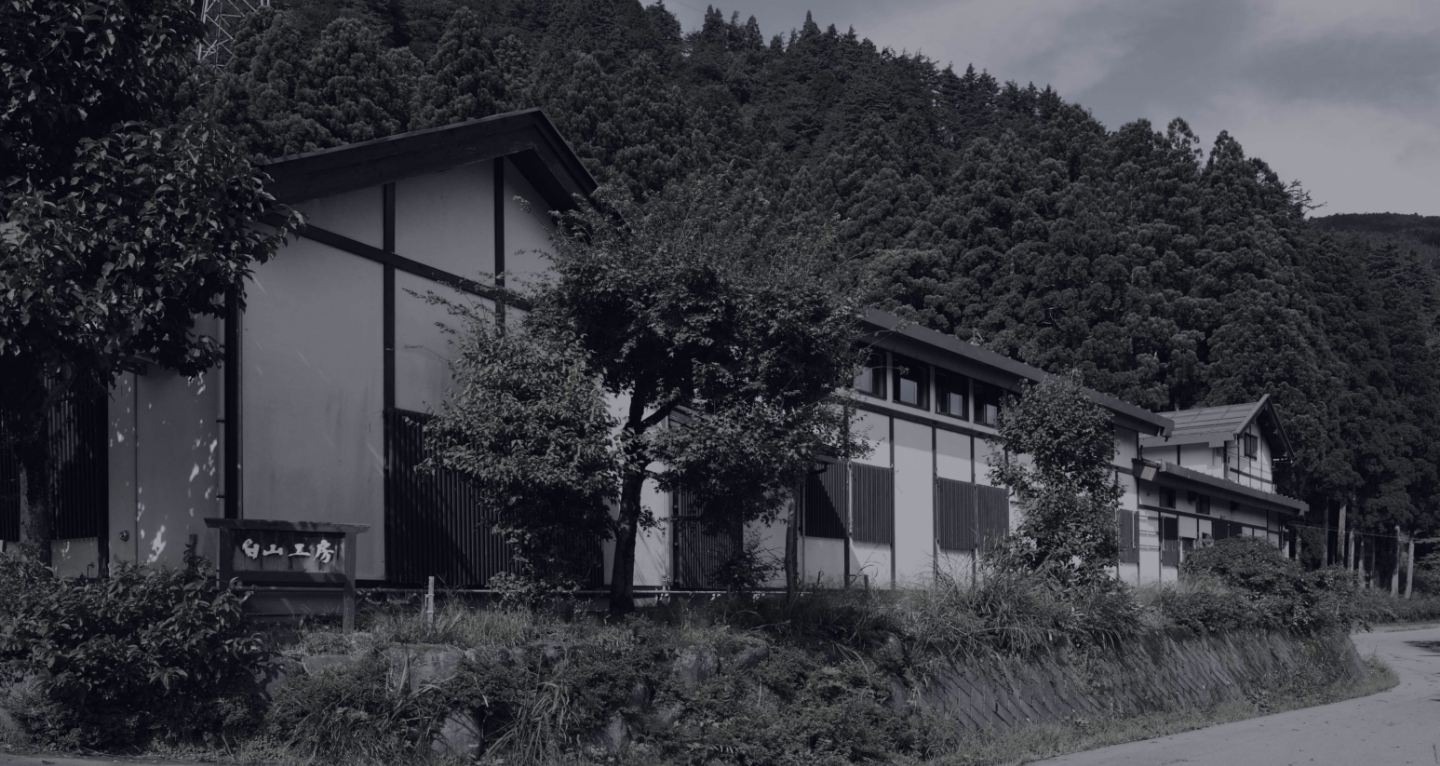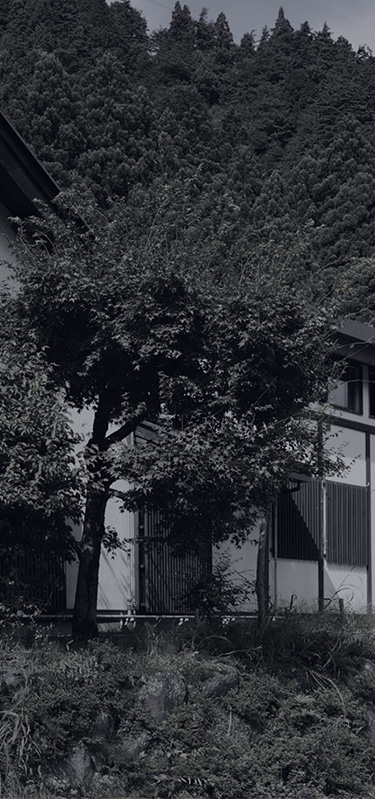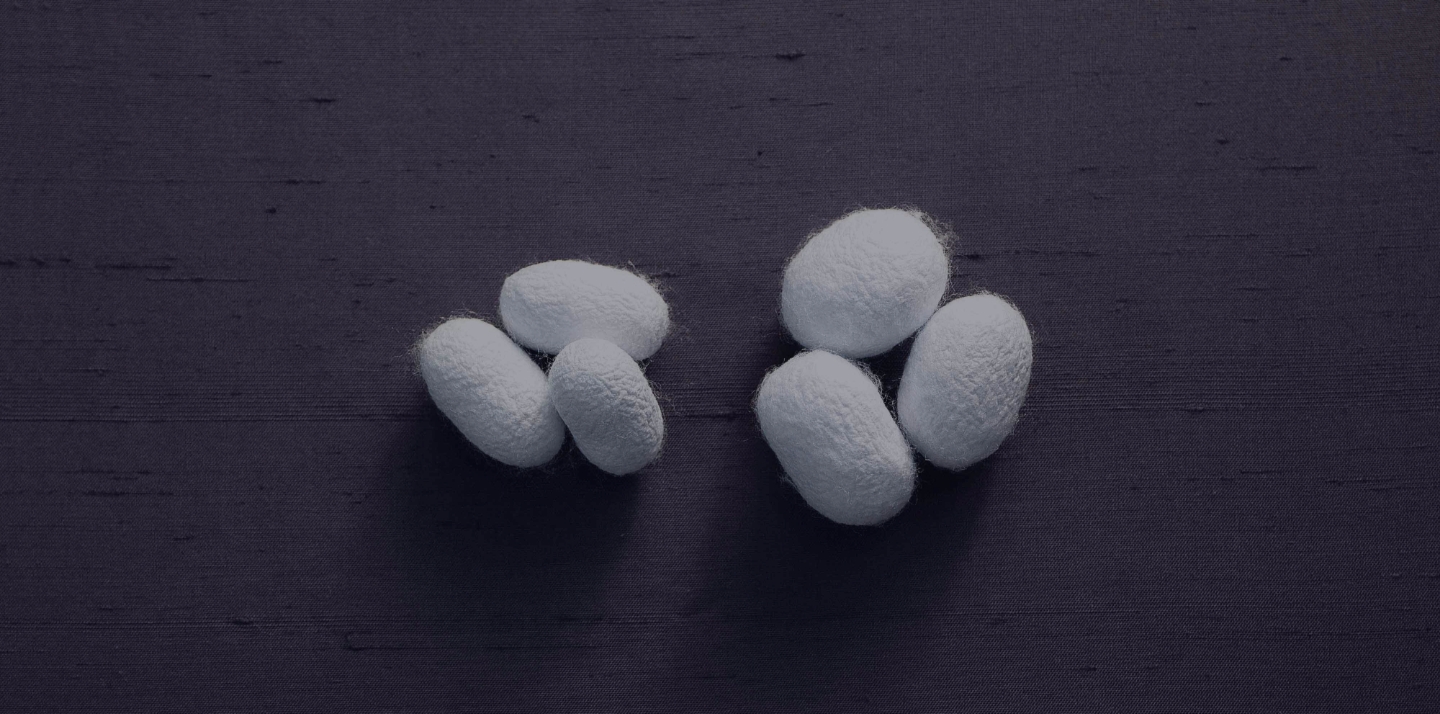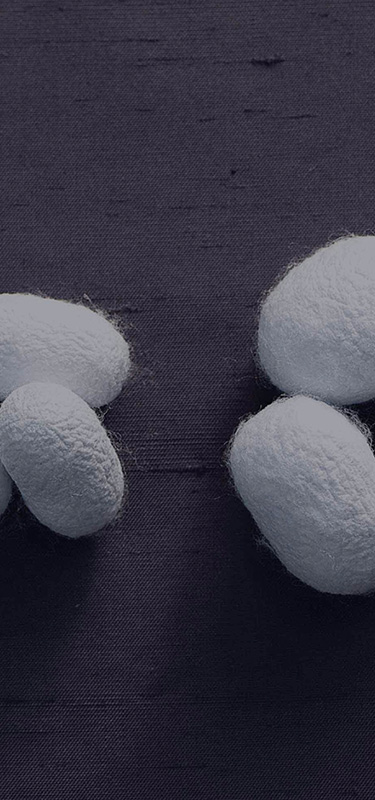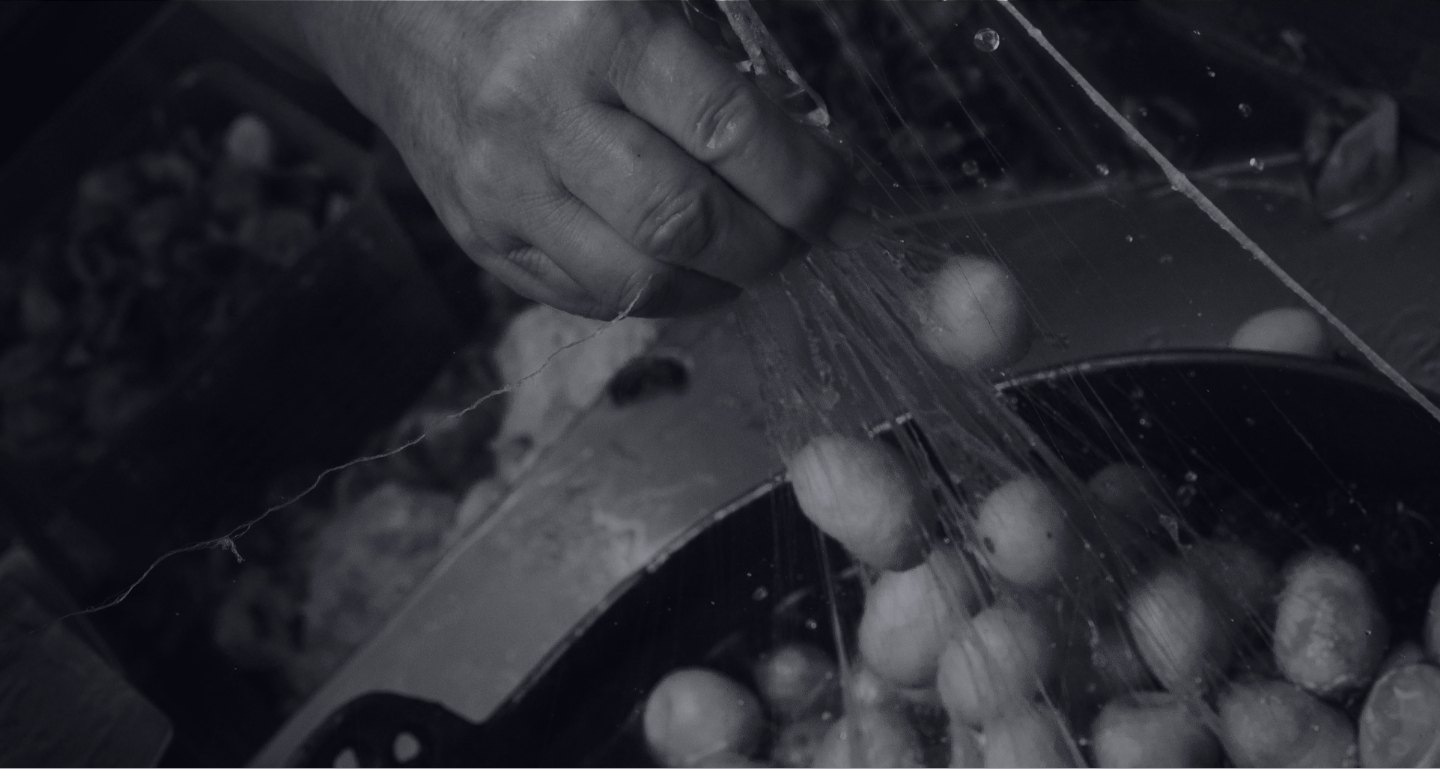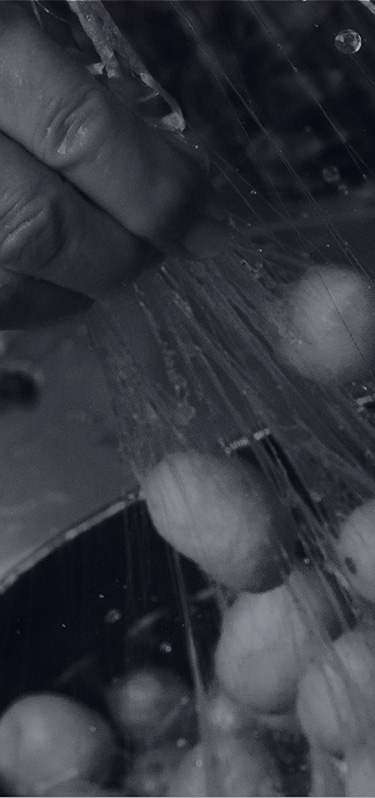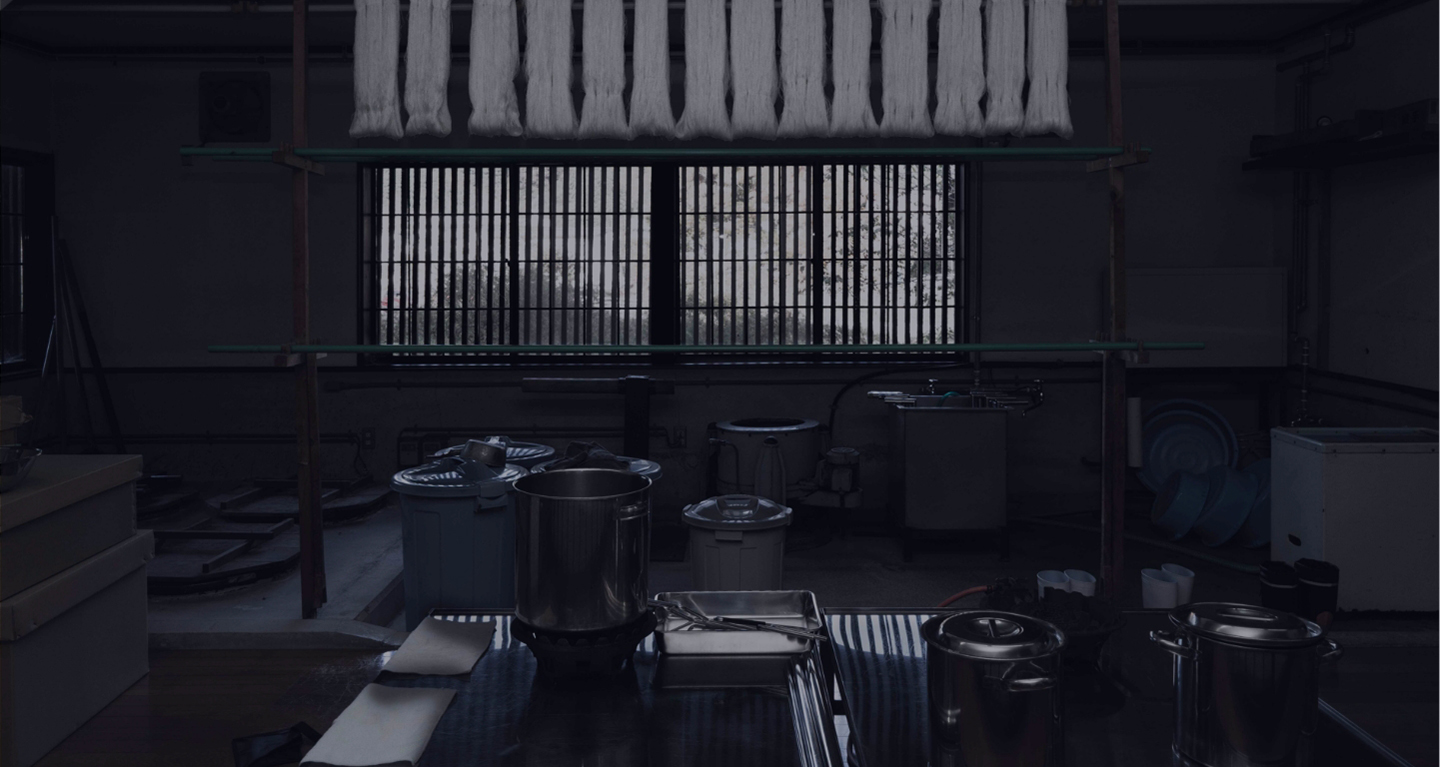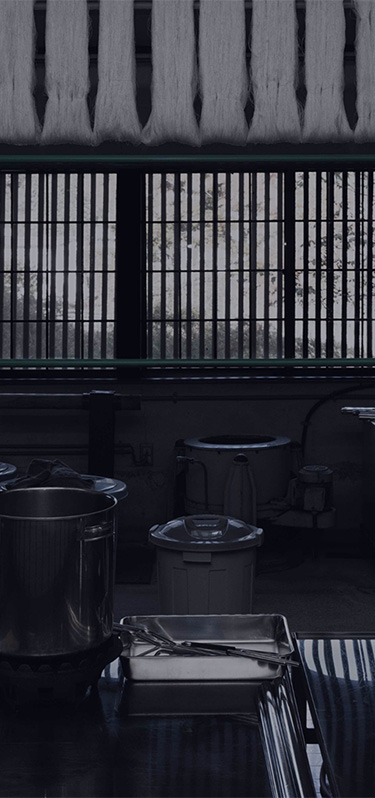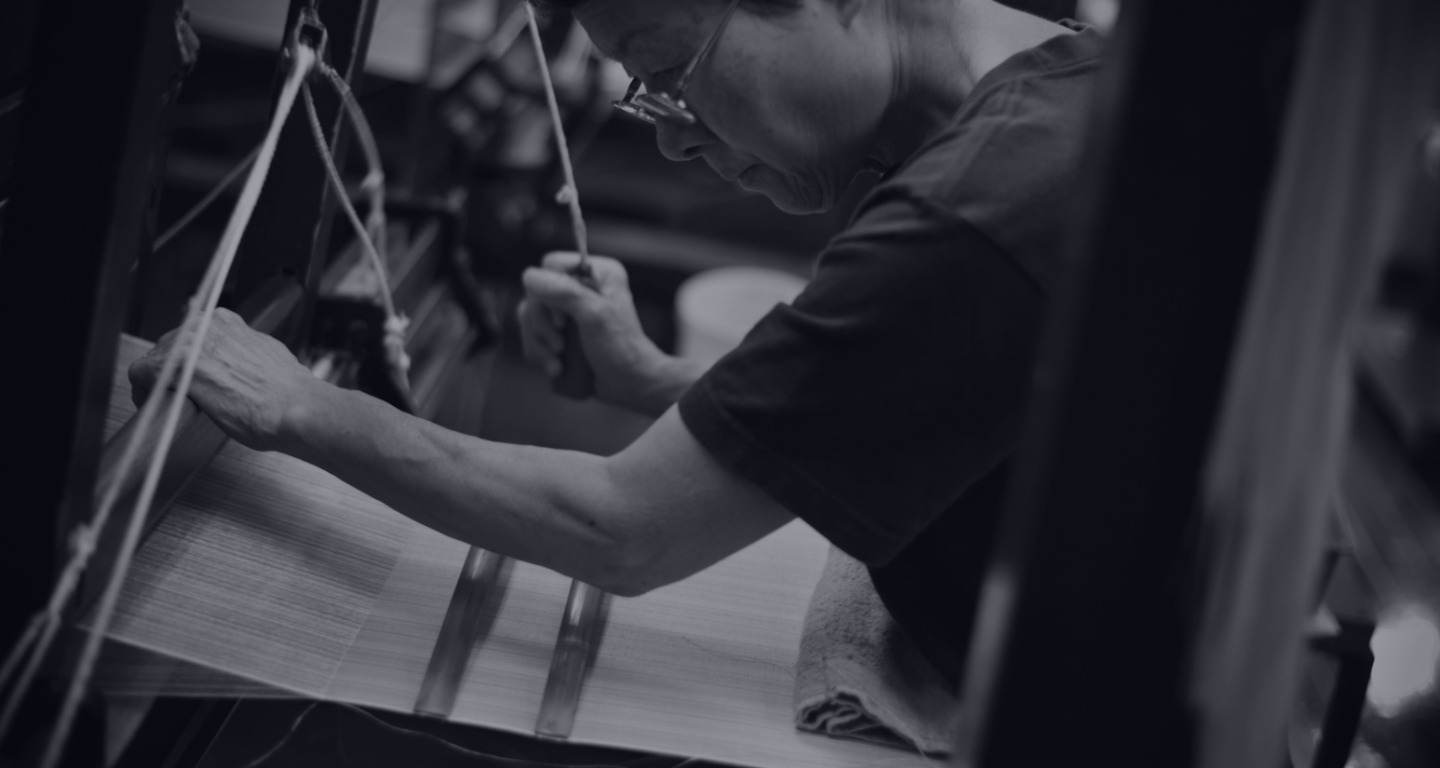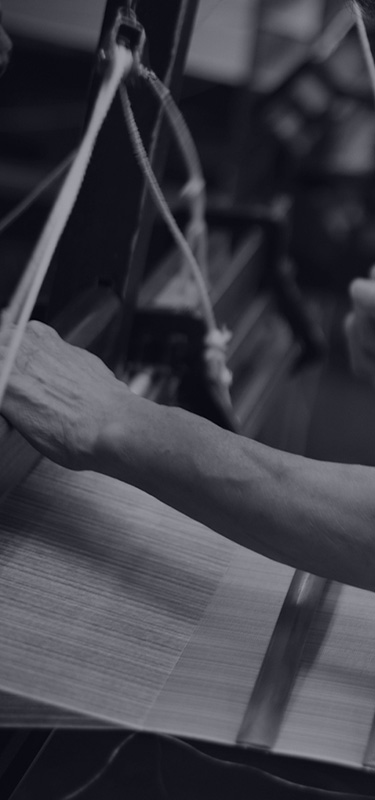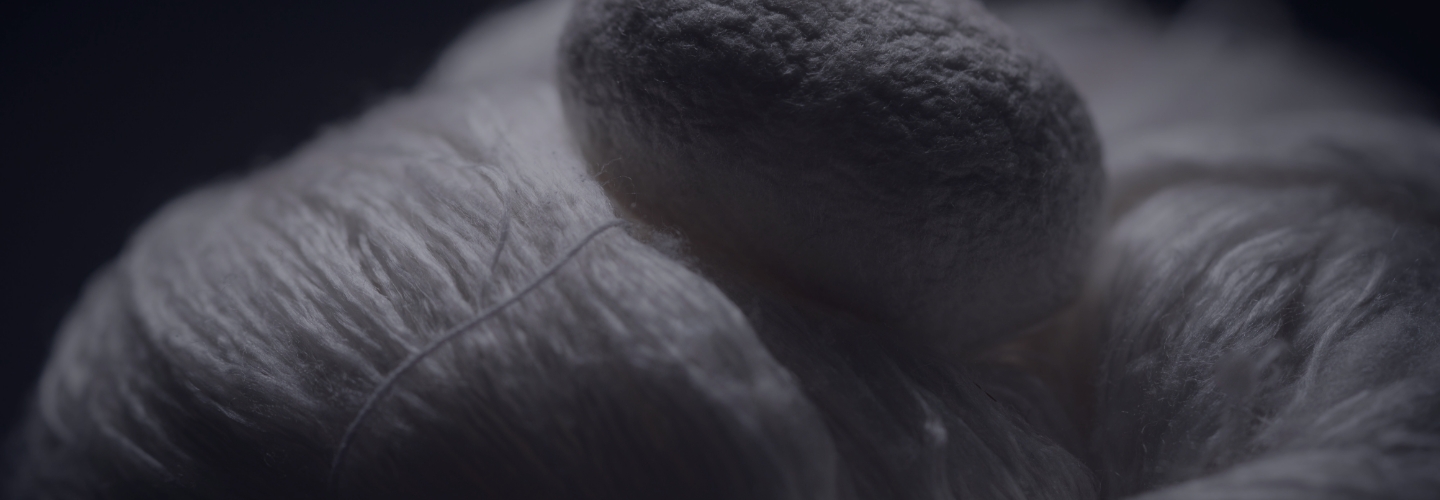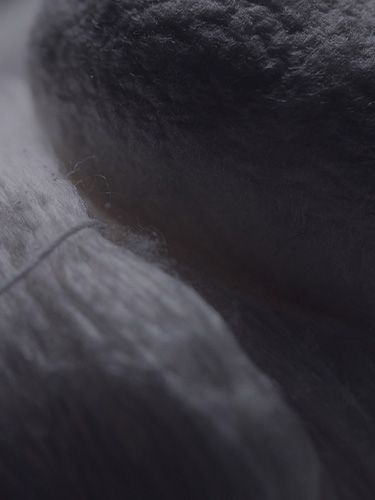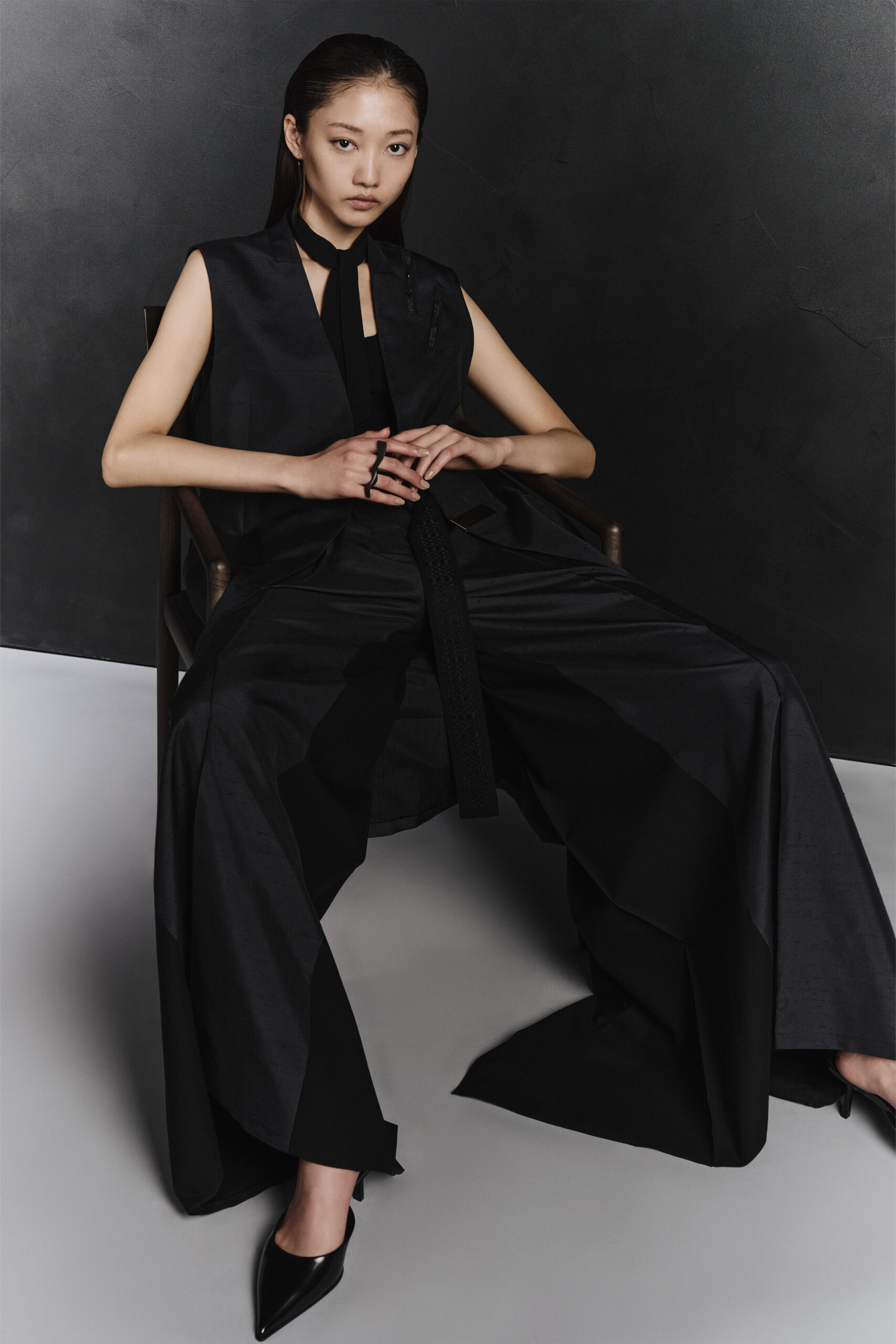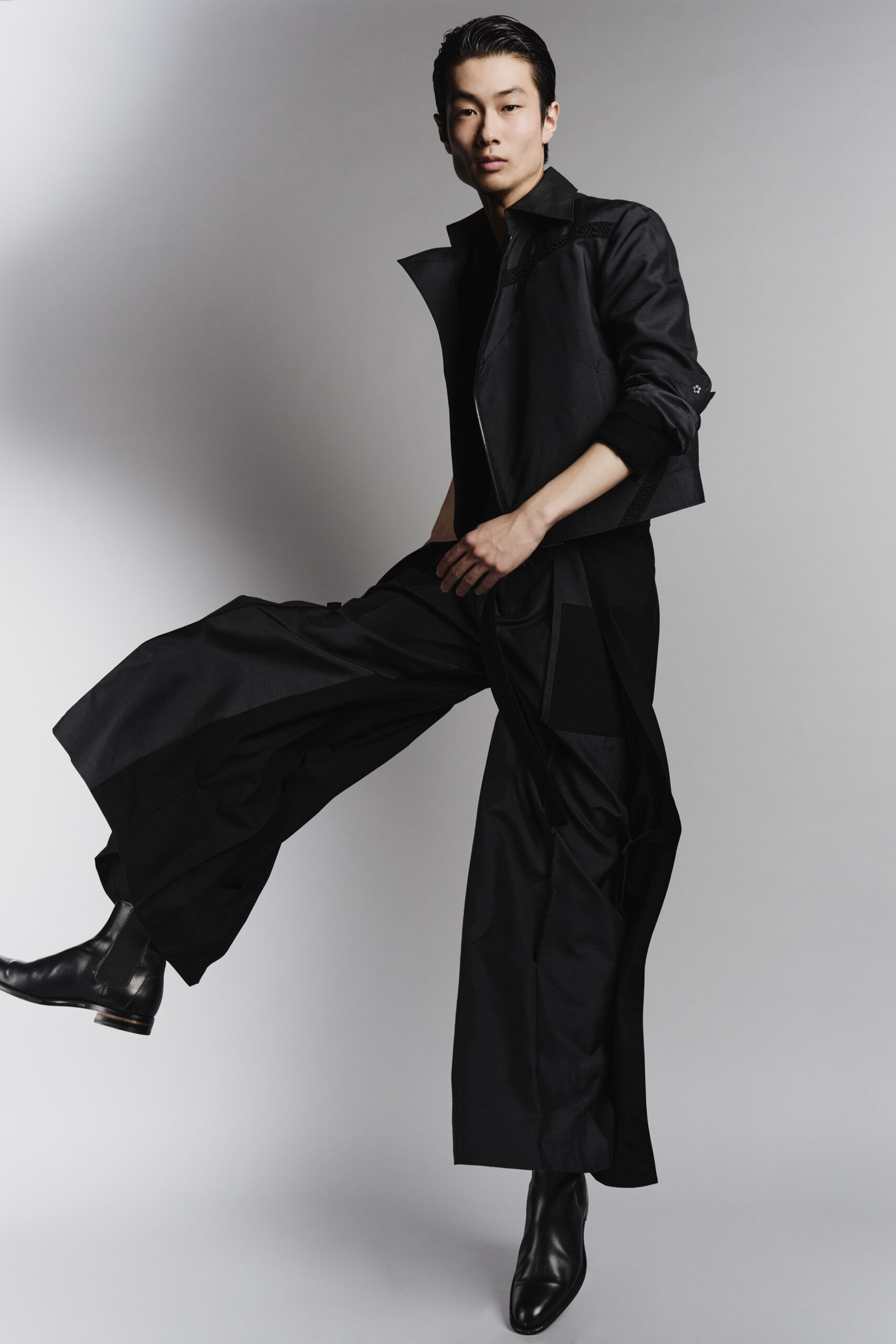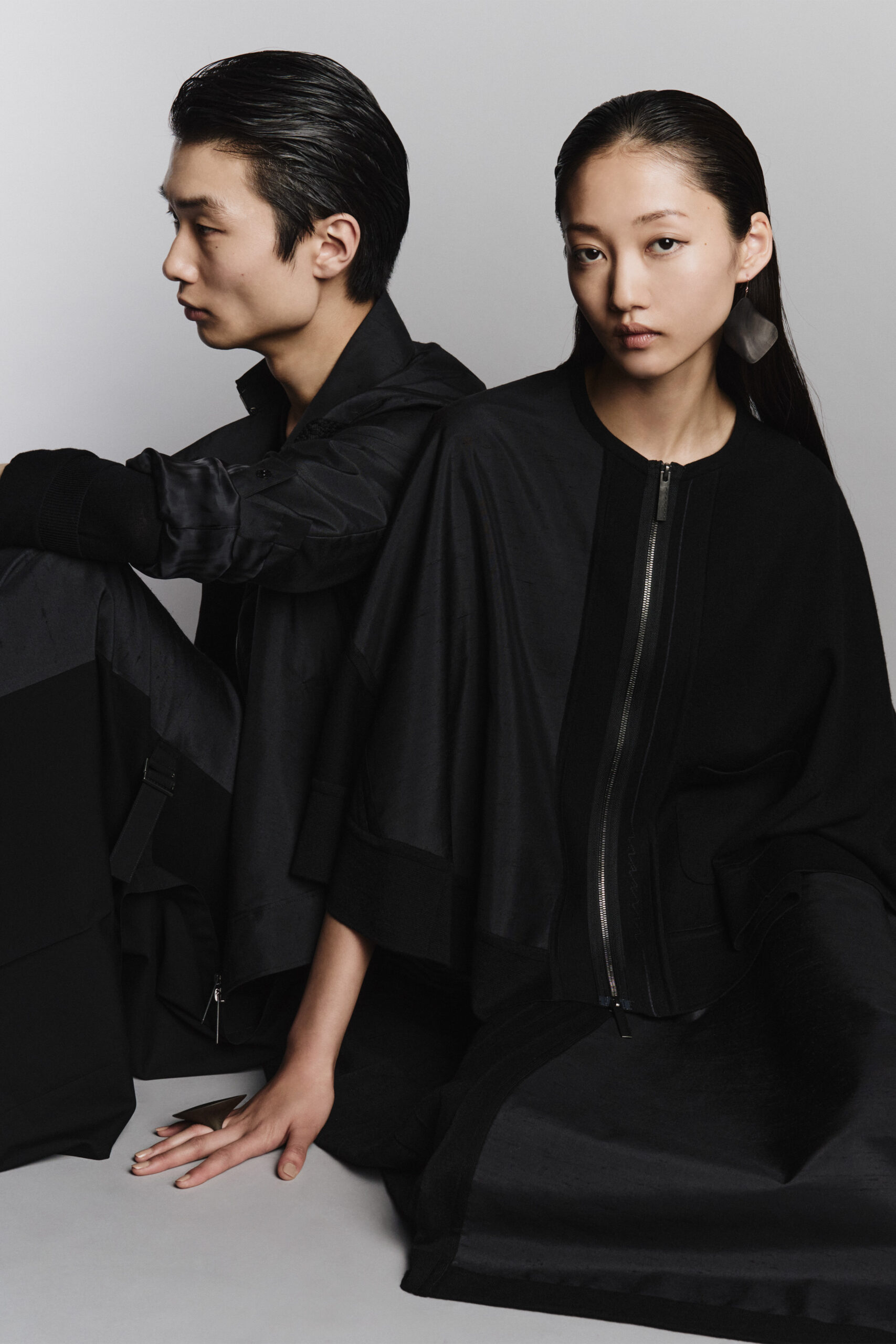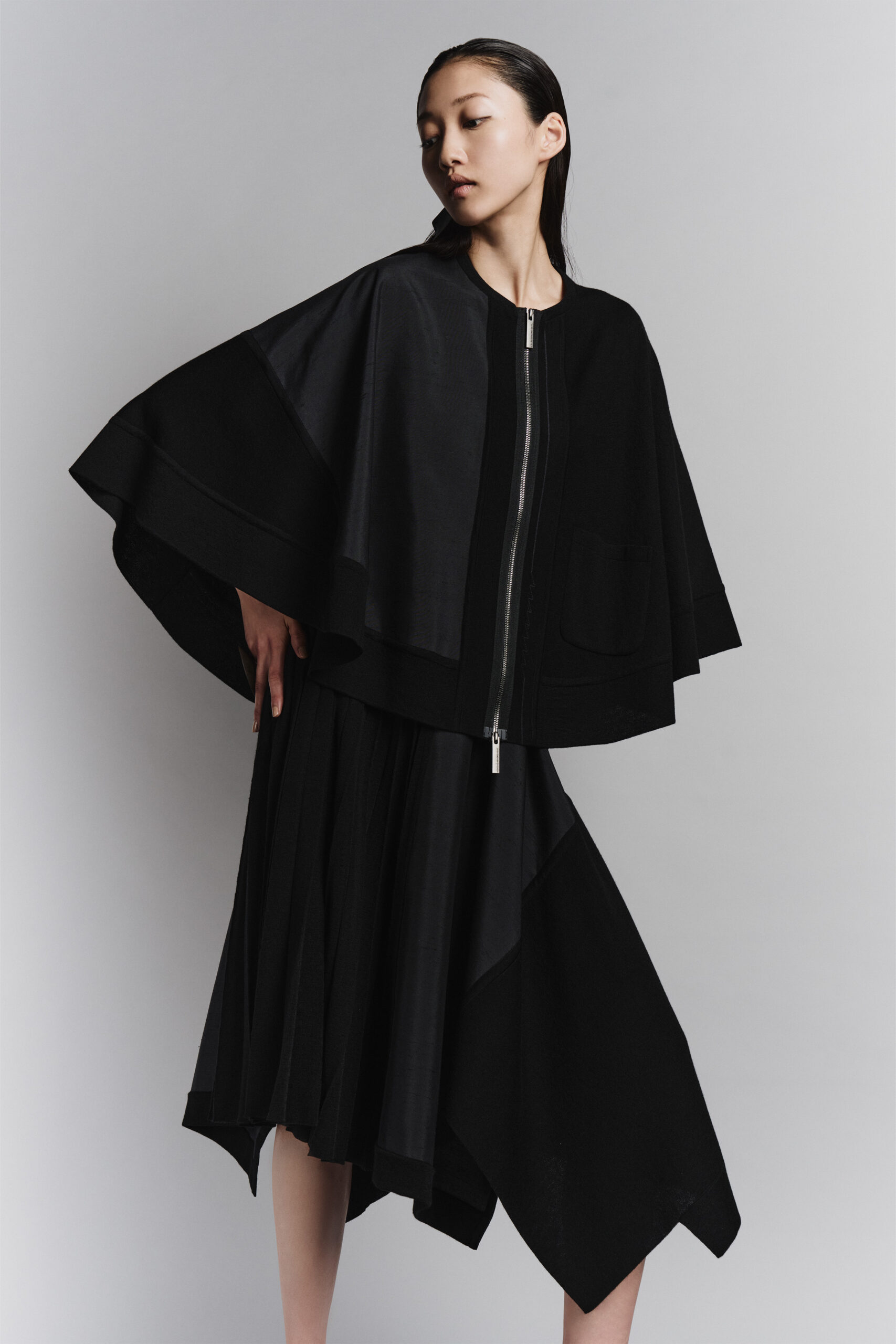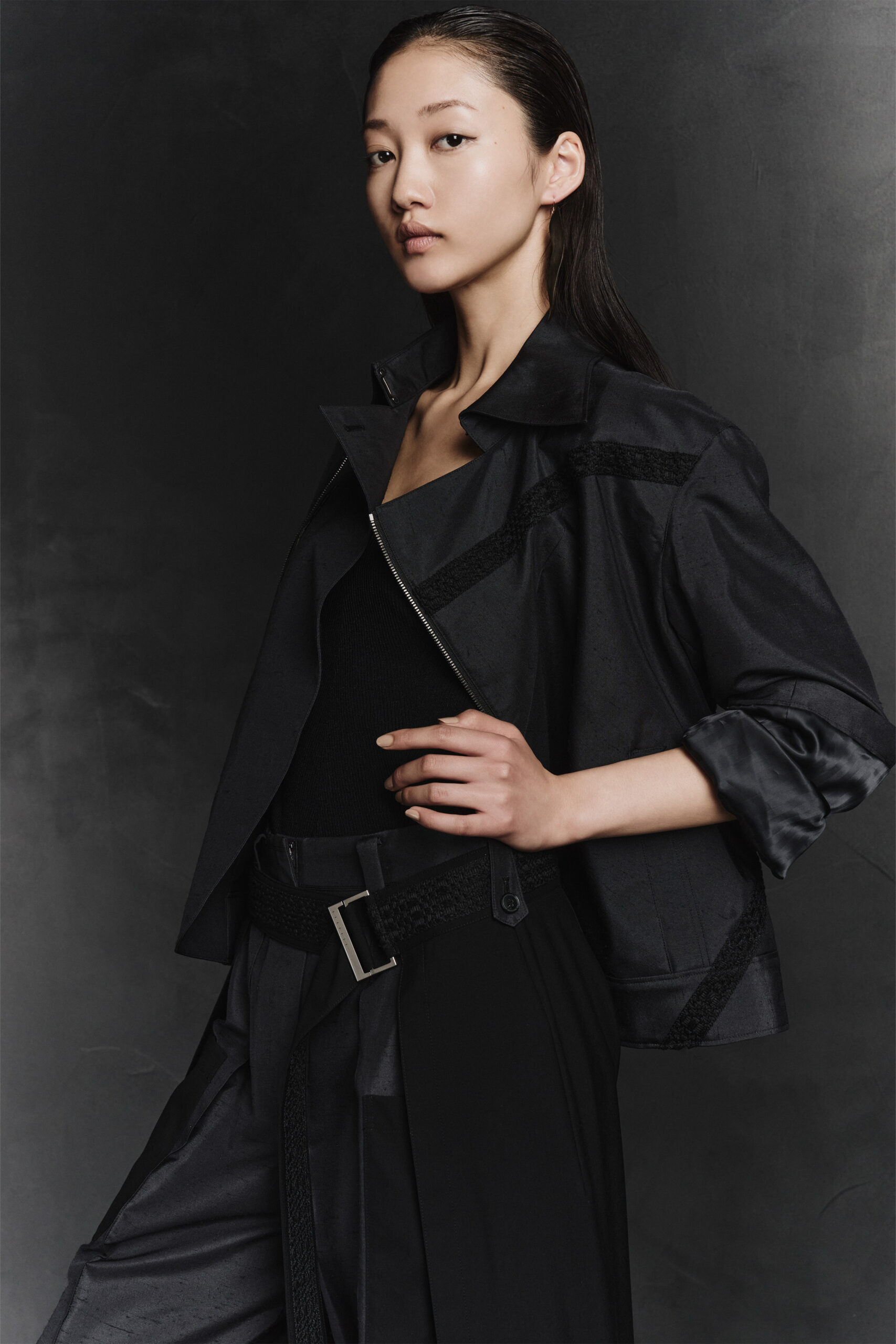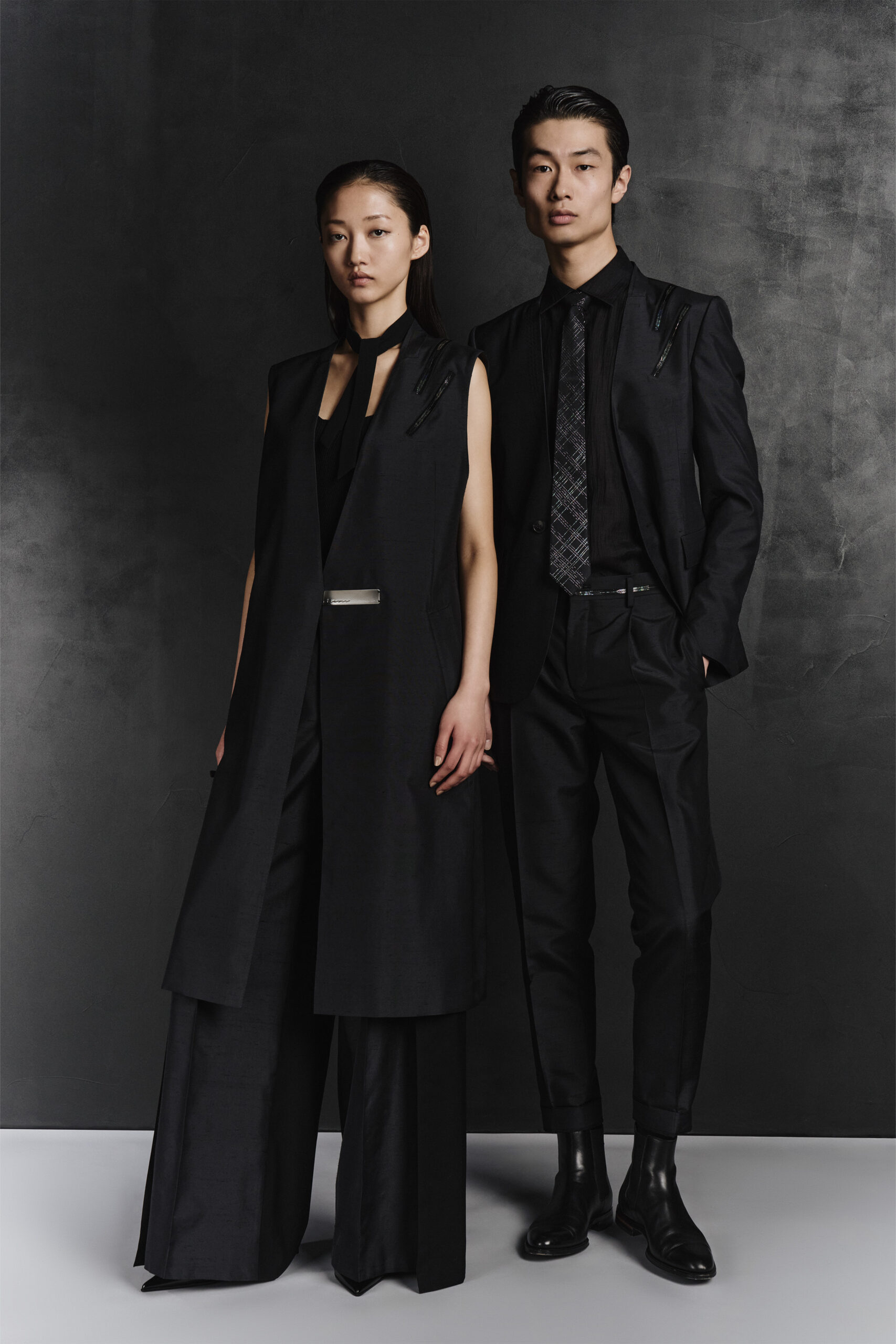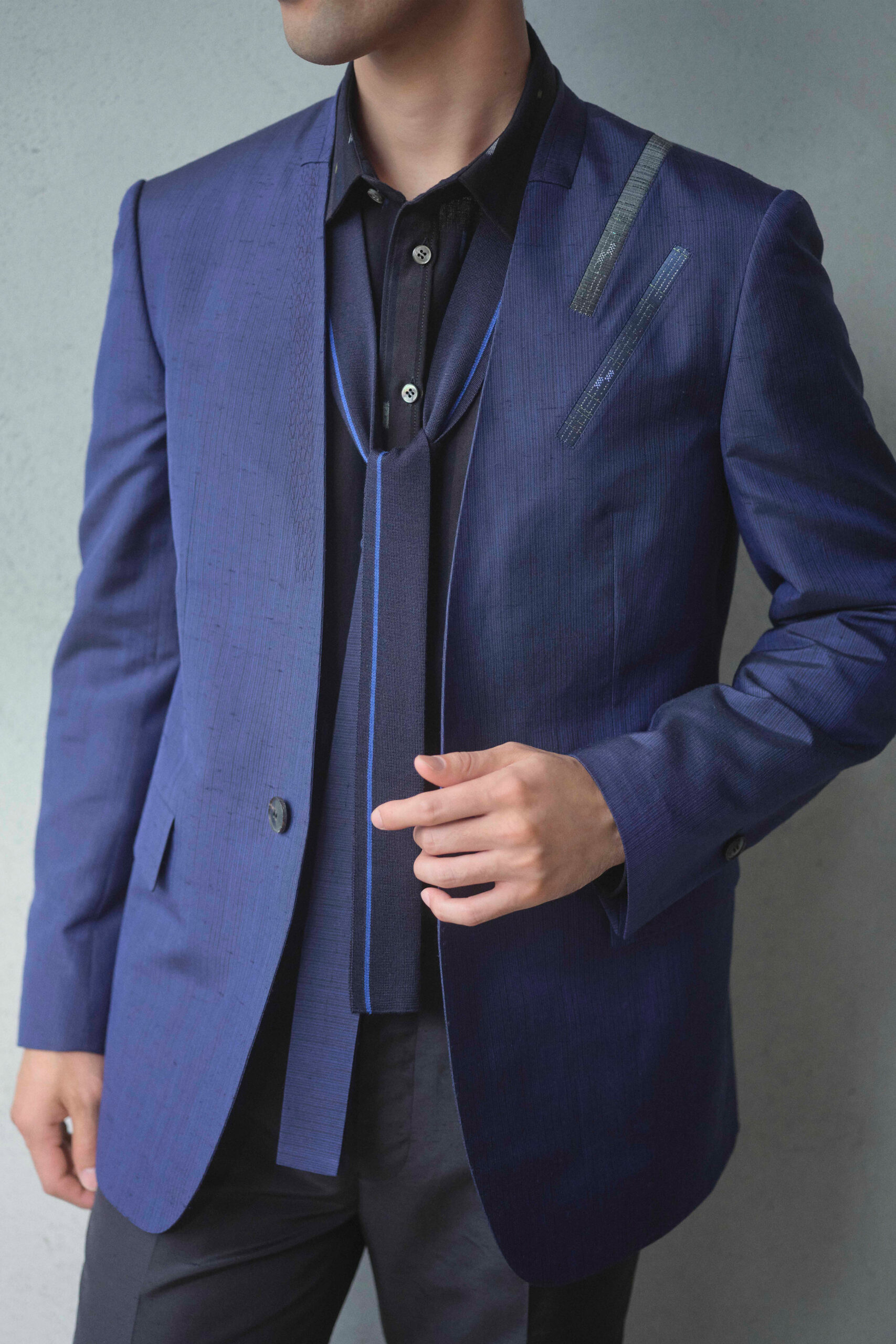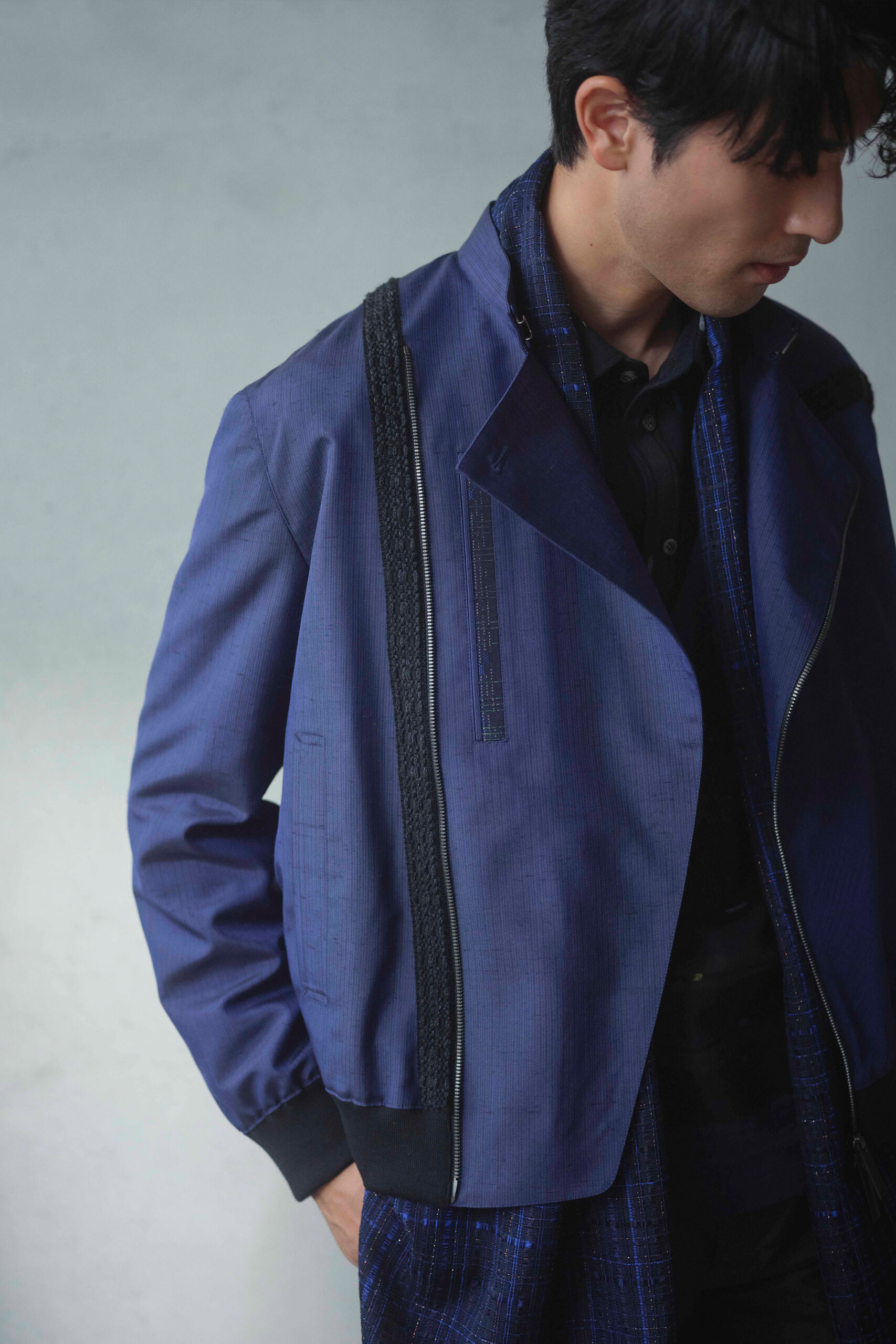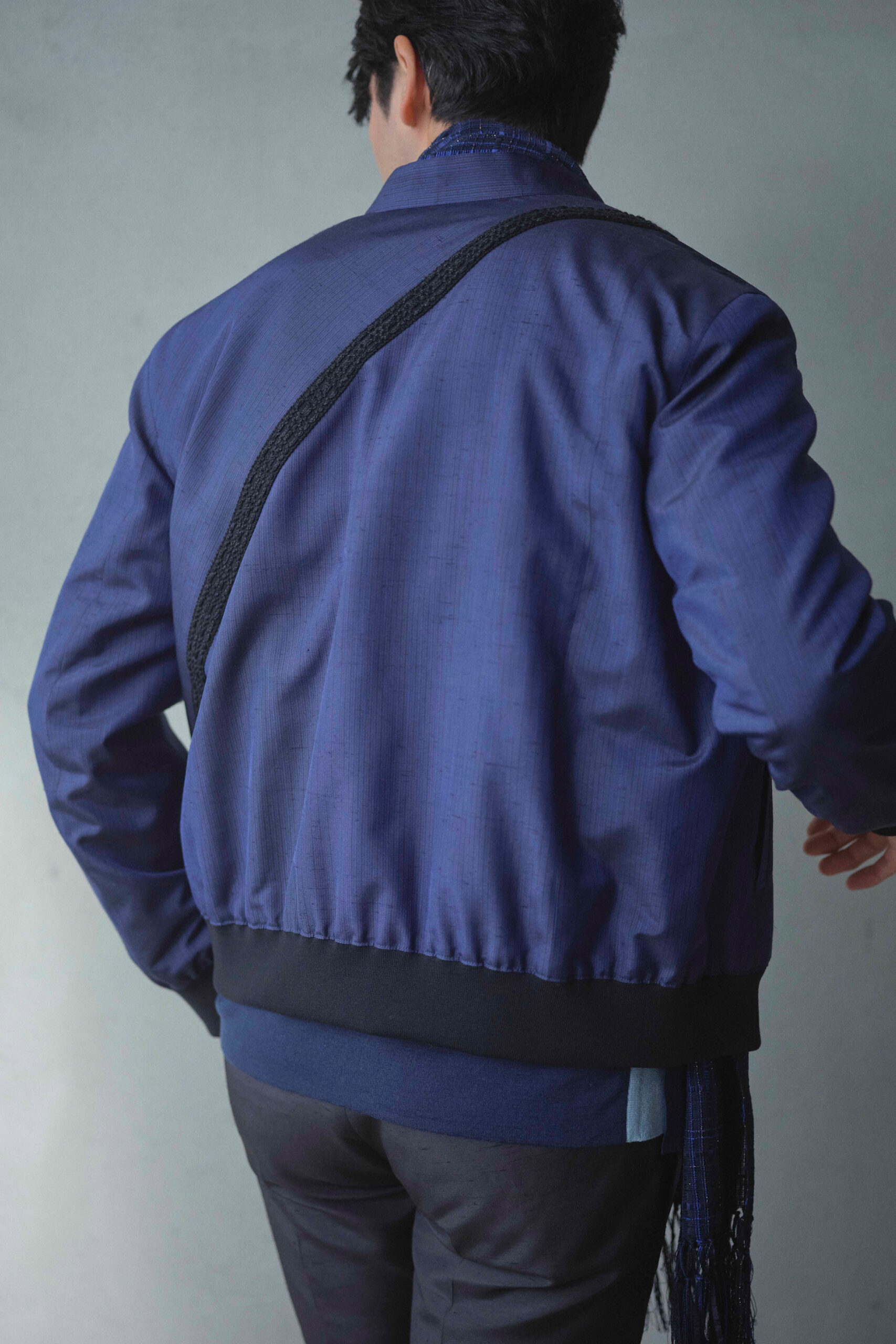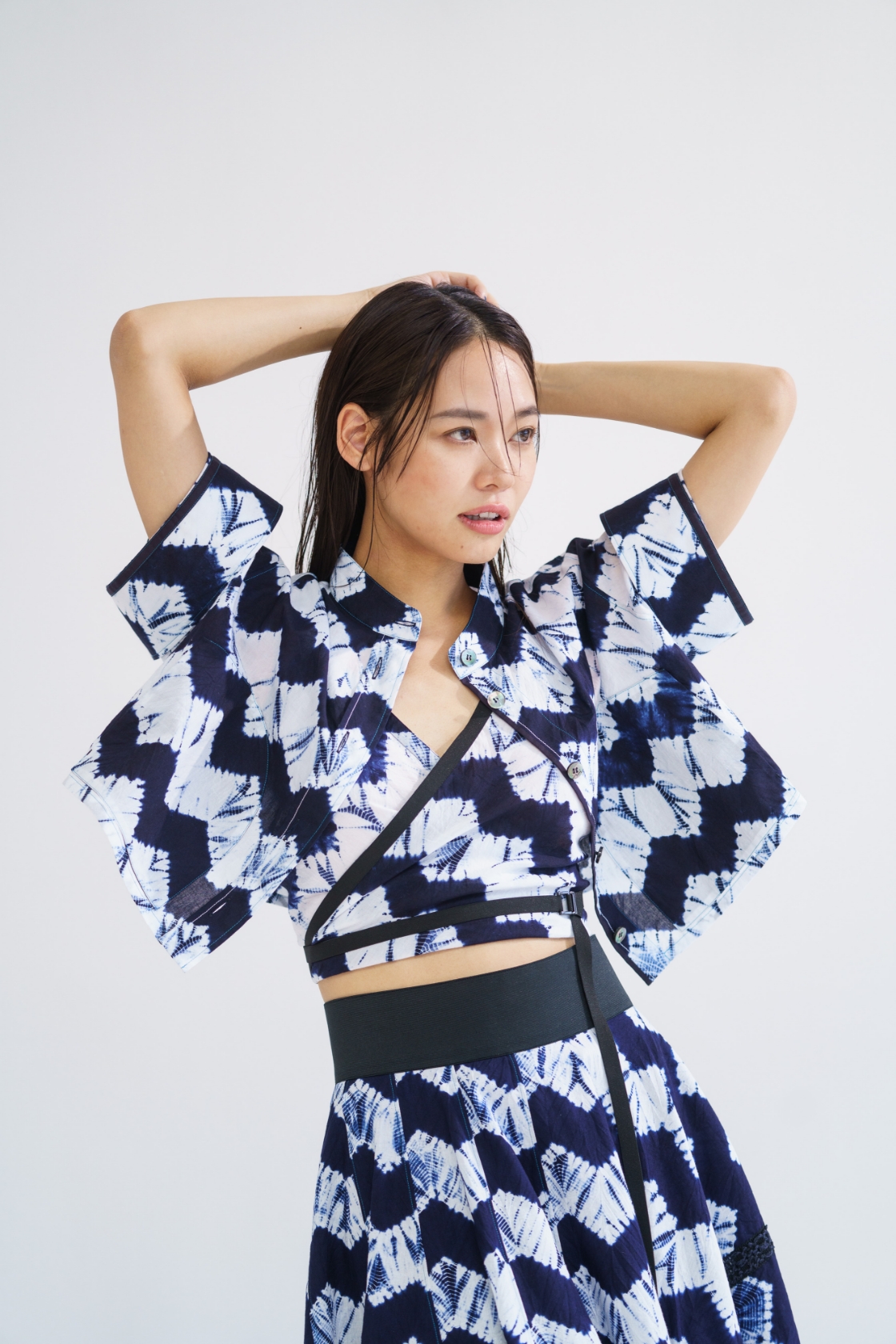USHIKUBI TSUMUGI
ISHIKAWA PREF.
Nature, spirit, and Craftsmanship: Superior Texture of Ushikubi Tsumugi/. Nature, spirit, and Craftsmanship: Unique Silk with Double Cocoons
In Ishikawa Prefecture, at the foot of Mount Hakusan in Shiramine (formerly Ushikubi Village),
there lies a traditional weaving art that has been continued for over 800 years.
Ushikubi Tsumugi is woven primarily using "Tamamayu"(玉繭), a special silk thread spun from cocoons jointly made by two silkworms.
This fabric is known for its elasticity and stretchability. It is also known for its durability and suppleness,
so much so that it is nicknamed Kugi-nuki-tsumugi, meaning to be "a Tsumugi that won't tear even if a nail driven through it."
A unique feature of Ushikubi Tsumugi is the traditional method of yarn spinning,
where entangled sections of the thread create distinctive uneven nodes characteristic of this fabric.

Tamamayu, Double Cocoon
In sericulture, a phenomenon occurs in 2-3% of cases where two silkworms jointly produce a single cocoon,
known as "Tamamayu"(double cocoons). Since two threads emerge from this cocoon,
it becomes tangled during the spinning process, making it difficult to produce smooth yarn.
Normally, these would be discarded as waste cocoons and excluded from raw silk production.
In the past, instead of discarding these waste cocoons, they were spun into yarn,
and this tangled thread was used to weave fabric, marking the origin of Tsumugi.
Silk Reeling
The process of spinning the intricately entangled dual threads
from Tamamayu into "Tamaito"(Tamamayu threads) is known as Nobe-biki(のべ引き).
This is a crucial step in making Ushikubi Tsumugi.
Unlike normal cocoons, where a single silkworm spins a continuous thread making it easy to draw smooth yarn,
the two threads of the Tamamayu are complexly intertwined,
making yarn production extremely challenging and reliant on the craftsmen's experience and intuition.
The Tamaito, born from this arduous process, contributes to the excellent elasticity, comfort, breathability,
and wrinkle-resistance that form the foundation of Ushikubi Tsumugi’s superior texture.
Twisting Threads, Refining, Itohataki, Dyeing
In Ushikubi Tsumugi, the thread spun through Nobe-biki is twisted without ever being dried.
Twisting the thread before drying enhances its quality.
The next step is 'Refining', where dirt and unwanted material are removed from the thread,
transforming it into its original, lustrous white silk.
Following refining, the thread is vigorously shaken in a process called Itohataki(糸はたき),
restoring the permanent wave-like undulations inherent to silkworm threads and creating a lively thread filled with air.
The thread is then dyed using plant-based or chemical dyes.
Warping, Weaving
For a single piece of Ushikubi Tsumugi, about 1,100 to 1,200 warp threads are used.
These are prepared in a process called Say-kay(整形), Warping, which arranges the necessary number and length of threads.
The fabric is then woven using a Hikibi(引き杼). The warp threads are opened up and down,
the shuttle containing the weft thread is passed from right side to the left side, and the reed is used to beat the weave.
This repetitive process, when perfectly synchronized, results in the creation of Ushikubi Tsumugi.
